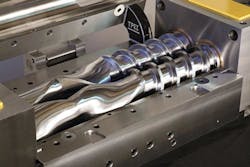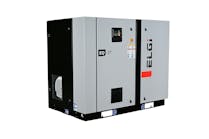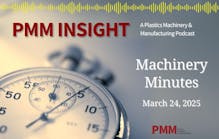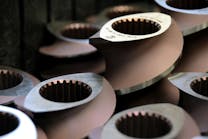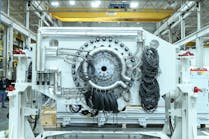Continuous mixing, a 50-year-old technology that fills an important niche for compounders, is drawing new interest from recyclers.
"Recyclers are coming up with more creative ways to utilize materials that were otherwise discarded, and some of the challenges those materials present can be overcome by a continuous mixer," said Slayton Altenburg, an applications engineer at Technical Process & Engineering Inc. (TPEI), a manufacturer of continuous mixers and single-screw extruders.
Continuous mixers have long been used by manufacturers of color concentrates, masterbatches and mineral-filled concentrates.
But it turns out that, in some cases, continuous mixers work better than extruders for recyclers compounding contaminated materials.
An example is a company that manufactures drainage products. Using a continuous mixer, it figured out a way to mix recycled carpet with other reclaimed material into a useable resin. The mixer can densify, melt and compound the material in a single operation.
"They would receive the carpet, shred it, use magnetic separation to get out the big pieces of metal, and add other reclaim," Altenburg said. "They were getting their base resin from the recycled carpet. The fly ash and dirt and other fillers in the carpet ended up being fillers. The EVA in the carpet backing acted as a slight impact modifier, and the other recycled materials further enhanced the impact resistance."
In this example, the material was compounded by the continuous mixer. A single-screw extruder was used only to pressurize and convey the material into a pelletizing system.
Continuous mixers have twin, counter-rotating, non-intermeshing rotors. The typical L:D ratio for processing reclaim is 6:1. Material is starve-fed, and the throughput is dependent on the feed rate. Dwell time is determined by the feed rate and orifice positions.
Shear is generated between the rotor tip and partially filled mixer body. Volatiles vent into the atmosphere. Mixing is complete when the material exits the mixer.
Continuous mixers come in a variety of sizes and cost about the same or a little more than a twin-screw extruder and about as much as a high-end single-screw extruder, Altenburg said. But overall cost of ownership is lower when utilities, maintenance and downtime are considered.
"If you have a 400-horsepower twin-screw extruder and need to process 1,500 pounds an hour, you are asking the extruder to use its horsepower for all the functions of the extruder," Altenburg said. "A continuous mixer with similar throughput would need a 150-horsepower motor, and the extruder would need about 70 horsepower." Actual horsepower needed would depend on the material.
Extruders, which typically have a longer L:D ratio, expose material to high temperature for a longer time and, depending on the die, can create additional shear. "Some material may not maintain its characteristics," he said.
TPEI sells continuous mixers separately, as well as with a single-screw extruder as a package. The extruder is used to move the material into a pelletizing or other downstream processing system. Systems range from lab size with a throughput of 50 pounds per hour up to 15,000 pounds per hour.
Ron Shinn, editor
rshinn@plasticsmachinerymagazine.com
Contact:Technical Process & Engineering Inc.,Lehighton, Pa., 570-386-4777, www.tpei.com
Ron Shinn | Editor
Editor Ron Shinn is a co-founder of Plastics Machinery & Manufacturing and has been covering the plastics industry for more than 35 years. He leads the editorial team, directs coverage and sets the editorial calendar. He also writes features, including the Talking Points column and On the Factory Floor, and covers recycling and sustainability for PMM and Plastics Recycling.
